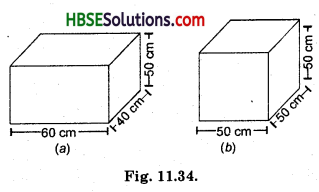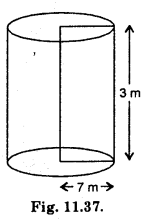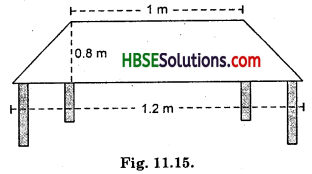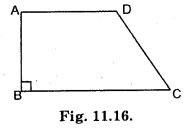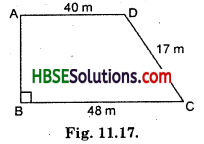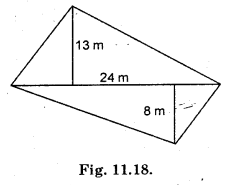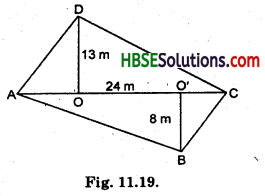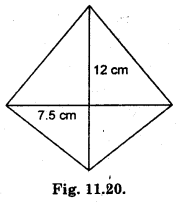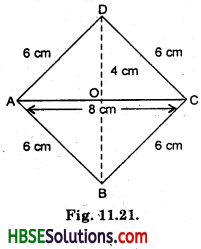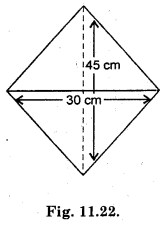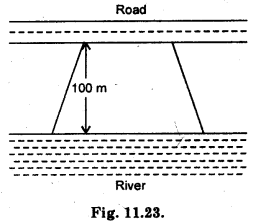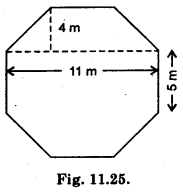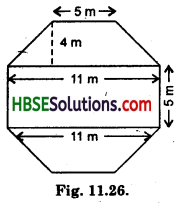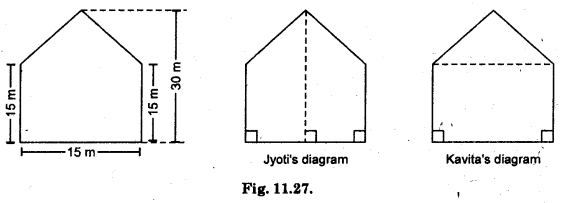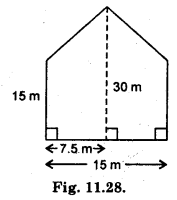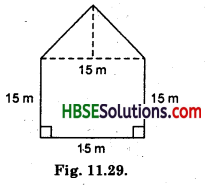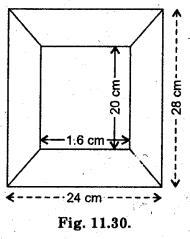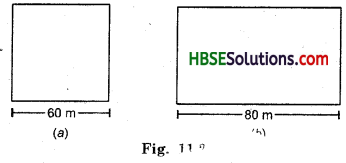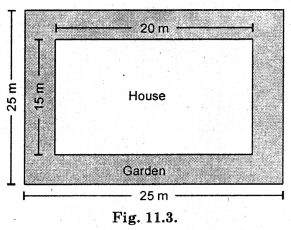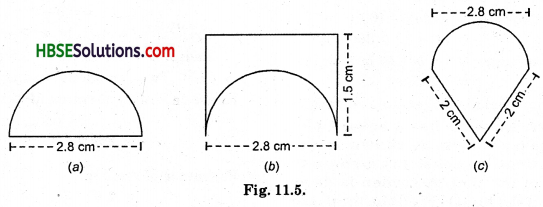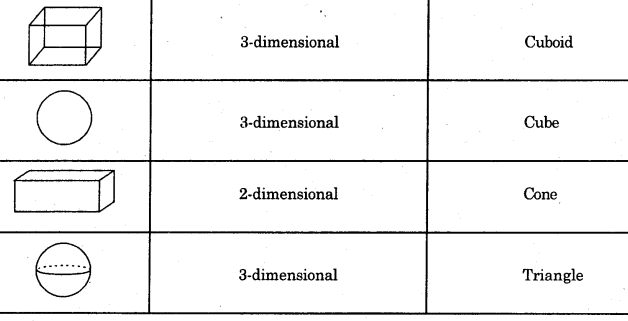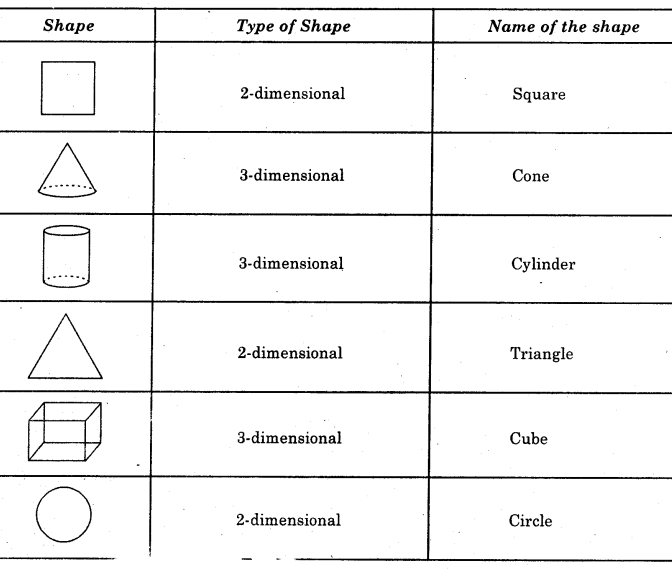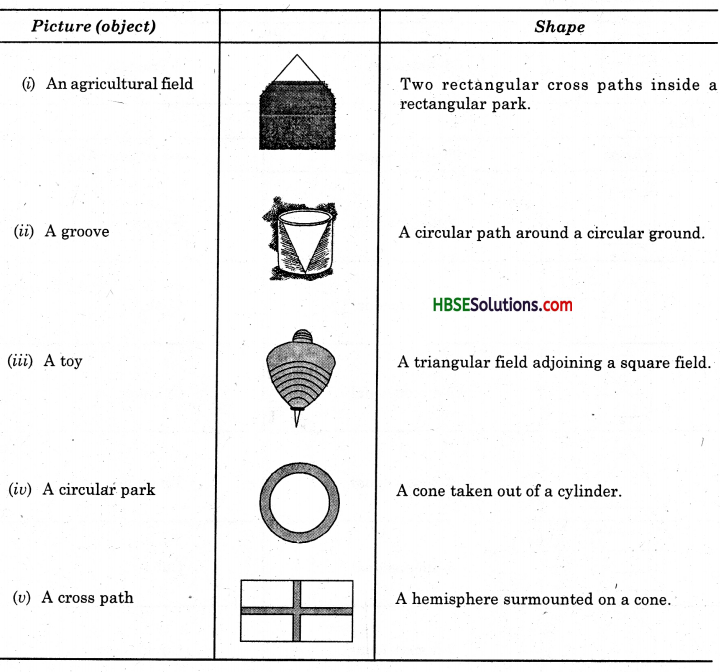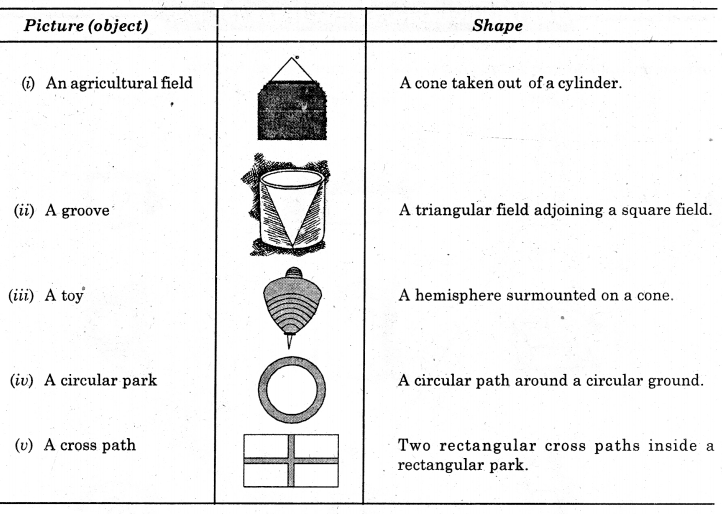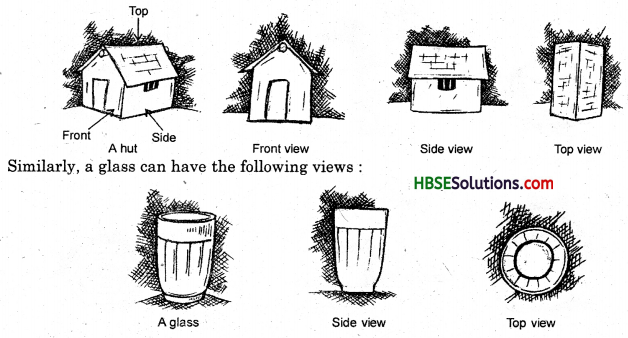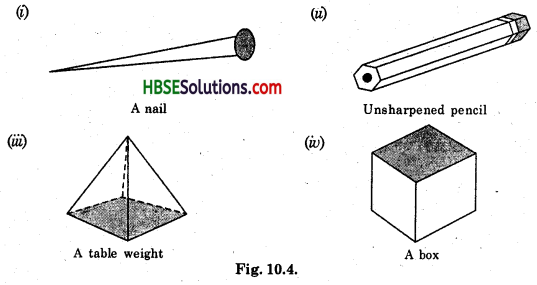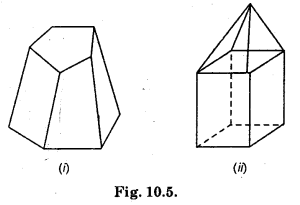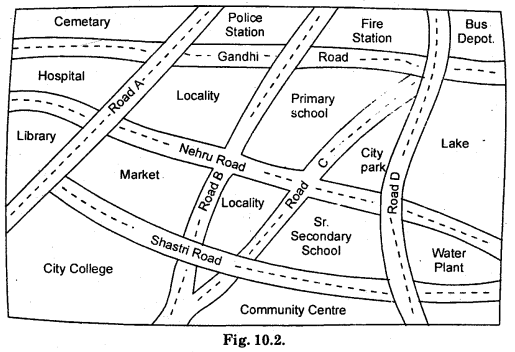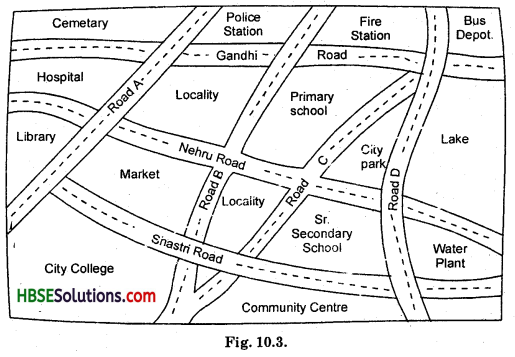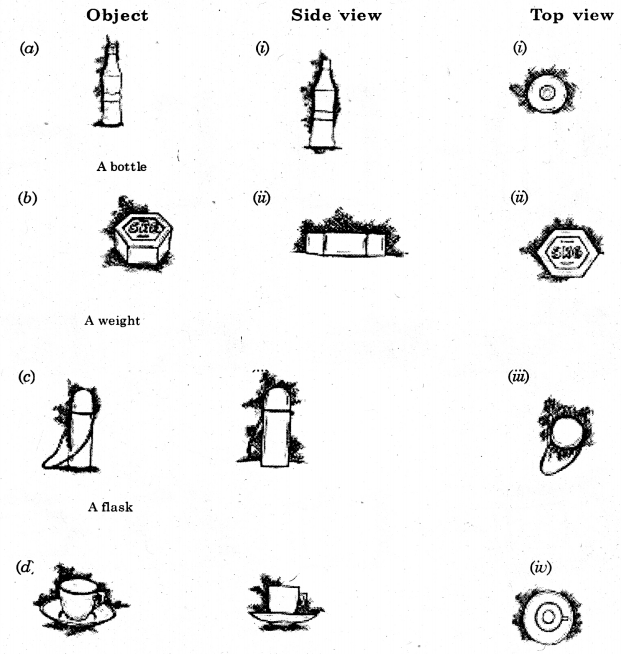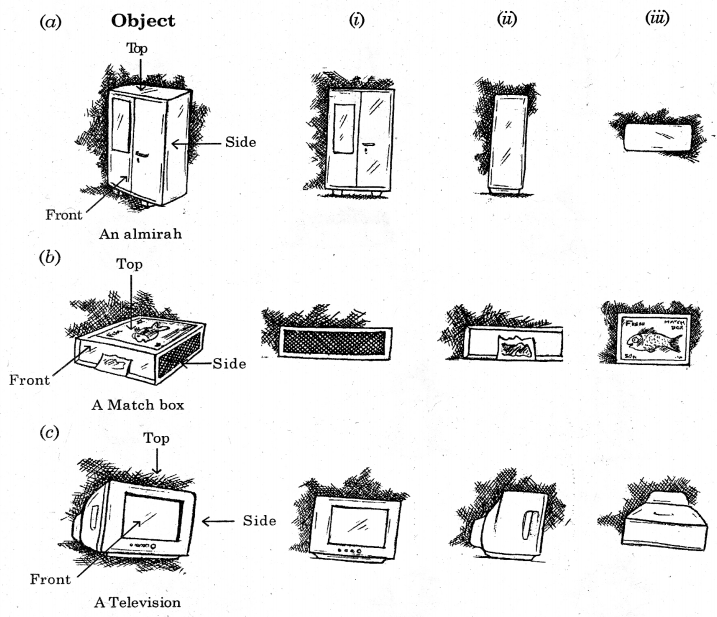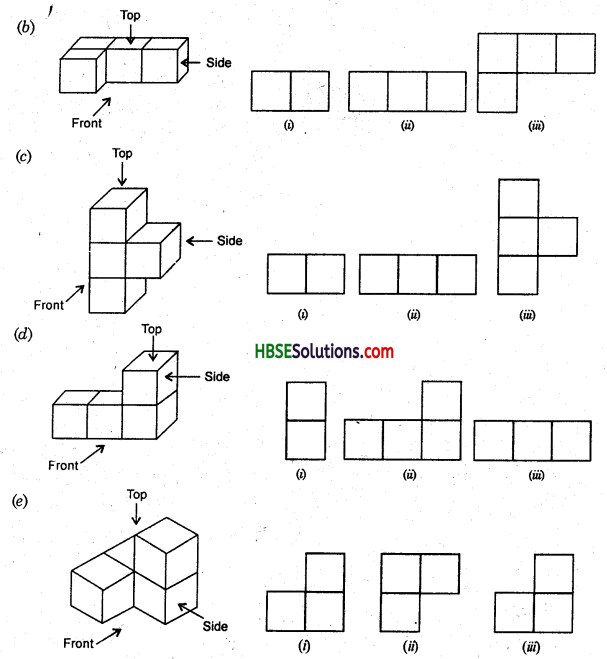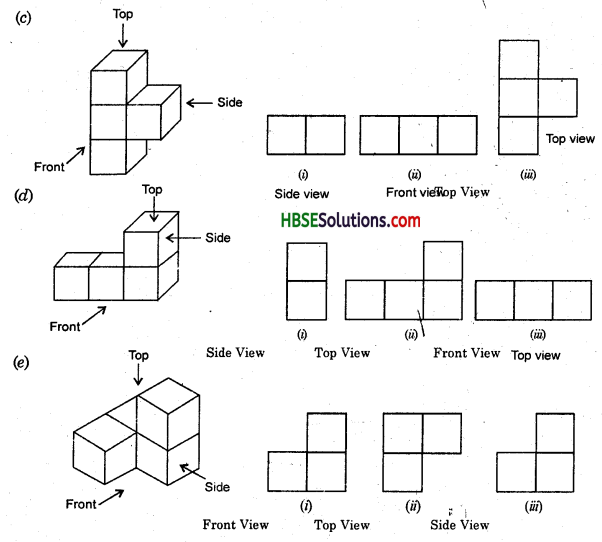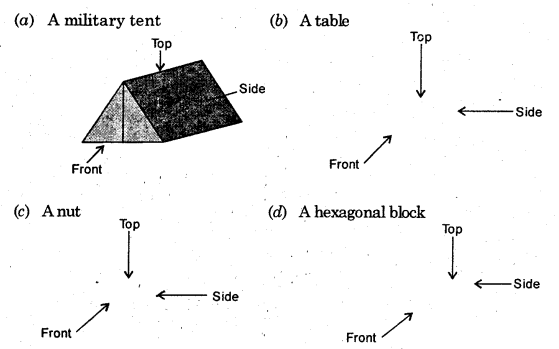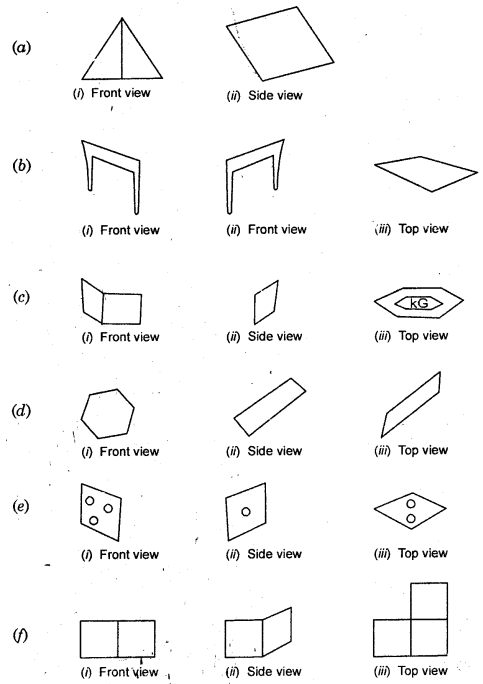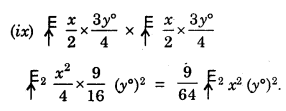HBSE 8th Class Maths Solutions Chapter 11 Mensuration Ex 11.4
Haryana State Board HBSE 8th Class Maths Solutions Chapter 11 Mensuration Ex 11.4 Textbook Exercise Questions and Answers.
Haryana Board 8th Class Maths Solutions Chapter 11 Mensuration Exercise 11.4
Question 1.
Given a cylindrical tank, in which situation will you find surface area and in which situation volume.
(a) To find how much it can hold.
(b) Number of cement bags required to plaster it.
(c) To find the number of smaller tanks that can be filled with water from it.
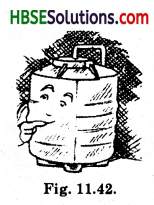
Solution:
(a) Volume of cylinder
= Area of base × height.
(b) Total surface area of cylinder = 2πr (r + h).
(c) Volume of cylinder = πr2h.
Question 2.
Diameter of cylinder A is 7 cm, and the height is 14 cm. Diameter of cylinder B is 14 cm and height is 7 cm. Without doing any calculations can you suggest whose volume is greater ? Verify it by finding the volume of both the cylinders. Check whether the cylinder with greater volume also has greater surface area ?

Solution:
(A) Radius = \(\frac{d}{2}\) = \(\frac{7}{2}\) cm
Height = 14 cm
Volume of cylinder = πr2h

= \(\frac{22}{7}\) × 7 × 7 × 7
= 1078 cm3.
(A) Curved surface area of cylinder = 2πrh
= 2 × \(\frac{22}{7}\) × \(\frac{7}{2}\) × 14
= 308 cm2
(B) Curved surface area of cylinder
= 2πrh
= 2 × \(\frac{22}{7}\) × 7 × 7
= 308 cm2
Hence the volume of cylinder (B) is greater than cylinder (A)
and surface area of cylinder (A) and (B) are equal.
If radius is greater, then volume of cylinder is greater.
![]()
Question 3.
Find the height of a cuboid whose base area is 180 cm2 and volume is 900 cm3?
Solution:
Volume of cuboid = l × b × h
Base area = l × b = 180 cm2
Volume of cuboid = 180 × h
900 cm3 = 180 × h
\(\frac{900}{180}\) = h
5 cm = h
∴ Height = 5 cm.
Question 4.
A cuboid is of dimensions 60 cm × 54 cm × 30 cm. How many small cubes with side 6 cm can be placed in the given cuboid ?
Solution:
Volume of cuboid
= 60 × 54 × 30
= 97200 cm2
Volume of cube (6 cm)3 = 216 cm3
Number of small cubes
= \(\frac{97200}{216}\) = 450 cubes.
![]()
Question 5.
Find the height of the cylinder whose volume is 1.54 m3 and diameter of the base is 140 cm ?
Solution:
Volume of cylinder = 1.54 m3
Diameter of cylinder = 140 m
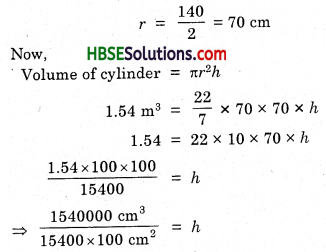
1 = h
Hence, height of cylinder = 1 m or 100 cm.
Question 6.
A milk tank is in the form of cylinder whose radius is 1.5 m and length is 7 m. Find the quantity of milk in litres that can be stored in the tank ?
Solution:
Radius = 1.5 m
Height = 7 m
Volume of cylinder = πr2h
= \(\frac{22}{7}\) × 1.5 × 1.5 × 7
= 49.5 cm3
We know that
1 m3 = 1000 litres
Hence 49.5 m3 = 1000 × 49.5 m3
= 49500 litres
Hence, the required quantity of milk in litres in tank = 49500 litres.
![]()
Question 7.
If each edge of a cube is doubled,
(a) how many times will its surface area increase ?
(b) how many times will its volume increase ?
Solution:

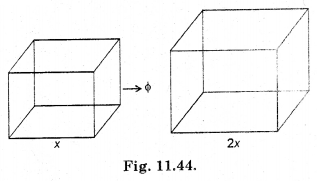
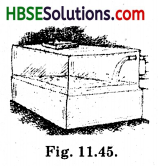
(a) Let the edge of a cube = x
If each edge of a cube is doubled then edge
= 2x
If l = x
Now, surface area of cube
= 6 × (x)2
= 6x2
If l = 2x, then surface area of cube
= 6 × (2x)2
= 6 × 4x2
= 24x2.
6x2 × 3 = 24x2
Hence, three times will its surface area increase.
(b) If l = x,
Volume of cube = (l)3 = x3
If l = 2x,
Volume of cube = (2x)3 = 8x3
x3 × 8 = 8x3
Hence, eight times will its volume increase.
![]()
Question 8.
Water is pouring into a cuboidal reservoir at the rate of 60 litres per minute. If the volume of reservoir is 108 m3, find the number of hours it will take to fill the reservoir.

Solution:
Volume of cuboidal reservoir = 108 m3
Volume of cuboidal reservoir in litres
= 108 m3 = 108 × 1000 litres
(∵ 1 cm3 = 1000 l)
= 108000 litres
Since water is pouring into a cuboidal reservoir at the rate of 60 litres per minute.
Hence no. of the times take to fill the water
= \(\frac{10800}{60}\) = 1800 minutes
= \(\frac{10800}{60}\) = 30 hours.
HBSE 8th Class Maths Solutions Chapter 11 Mensuration Ex 11.4 Read More »
